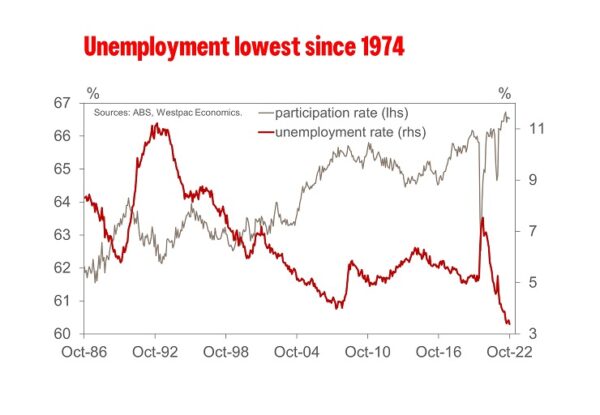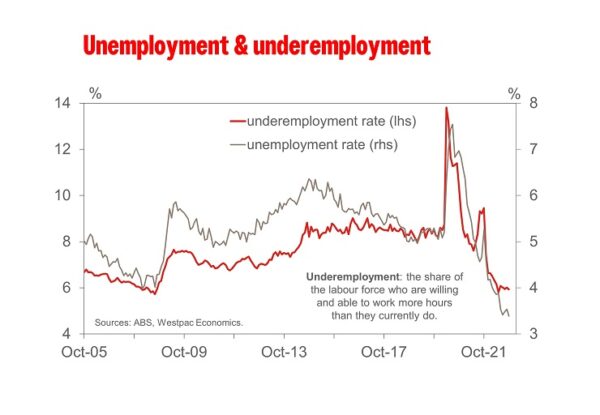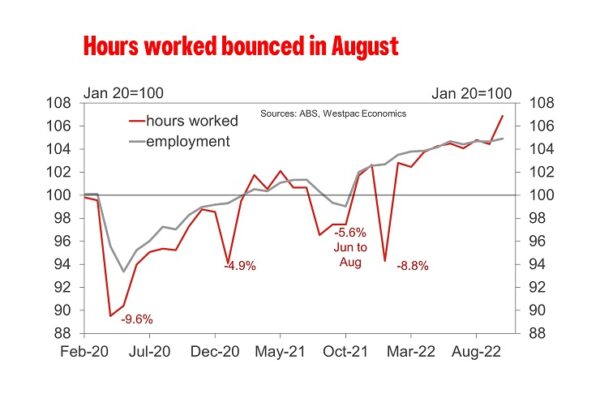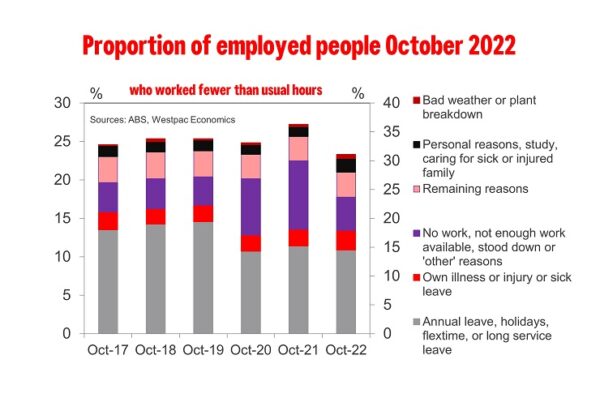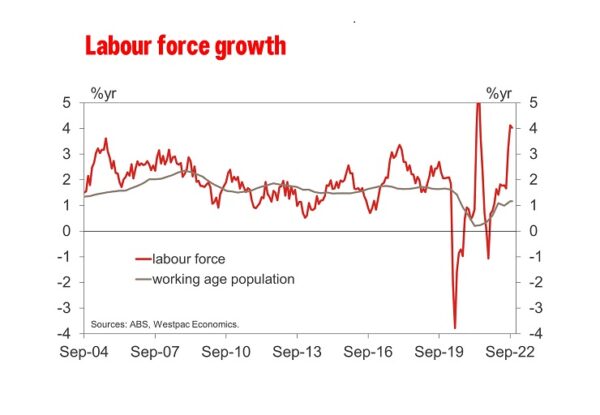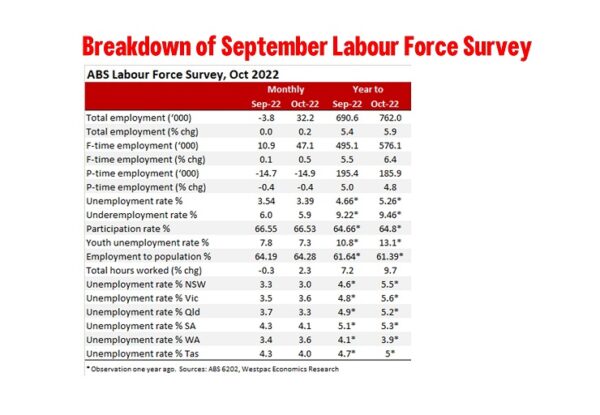Total employment: 32.2k from -3.8k (revised from 0.9k); unemployment rate: 3.4% from 3.5% (unrevised 3.5%); participation rate: 66.5% from 66.5% (revised 66.6%). It was a strong update even though holidays, sickness and floods continue to hold back the recovery. Unemployment is now the lowest level since November 1974.
Total employment gained 32.2k or 0.2% in October while September employment was revised from 0.9k to -3.8k. In the year total employment has grown 762.0k or 5.9%.
The size of the gain in employment was enough to lift the employment to population ratio 0.1ppt to 64.3%
Participation was flat at 65.5% (at two decimal places it fell from 65.55% to 65.53) which is just under the historical high of 66.7%. Due to the moderation in participation there was a smaller 11.7k gain in the labour force resulting in a -20.6k drop in the number of unemployment with the unemployment rate falling 0.1ppt to 3.4% (3.54% and 3.39% respectively at two decimal places).
At 3.4% the unemployment rate is low the lowest since November 1974.
Westpac’s forecast unemployment rate at end 2022 is 3.3%.
Underemployment, those employed who are willing and able to work more hours if offered them, fell 0.1ppt to 5.9%, 2.8ppt points below the pre-pandemic rate. However, as you can note in the chart, since May the unemployment rate has fallen 0.5ppt while the underemployment rate has been tracking sideways and is now up 0.1ppt. Given how tight the labour market is it is somewhat surprising we have not seen underemployment fall with unemployment.
The underutilisation rate, which combines the unemployment and underemployment rates, fell 0.2ppt 9.3% which is 4.6ppt below March 2020, and the lowest rate since March 1982.
There has been an interesting shift in gender outcomes. Since January 2021 female employment has grown much more strongly (+371.6k/6.1%) than males (338.9k/5.0%) but in October male employment lifted 24.0k/0.3% compared to the smaller 8.3k/0.1% gain for females. The saw the unemployment rate for men fall 0.3ppt to 3.2%, the lowest rate since November 1974. For women, unemployment was steady at 3.6%.
The participation rate fell 0.1ppt for men to 70.9% and was steady for women at 62.3%. A falling participation for men with a robust lift in employment suggest the gain was all demand driven and employers are facing, at the margin, a tighter labour market for males than females.
Seasonally adjusted monthly hours worked increased by 2.3 per cent, stronger than the growth in employment (0.2 per cent). This stronger growth in hours partly reflected fewer employed people than usual taking leave during October.
In September we noted that the number of people working fewer hours because they were sick was around 14% higher than the pre-COVID level. While still high it was down from the two to three times higher levels earlier in 2022.
For October, the ABS noted that the number of people working fewer hours because they were on annual leave increased between September and October, consistent with school holidays and public holidays. However, the number of people on annual leave in October 2022 was around 10% less than we typically see in October. Some of this difference may reflect people who would normally have taken annual leave being sick instead, with around 30% more people than usual working reduced hours in October due to sickness.
Again in October greater than usual sickness is still impacting on the data but it is no longer two-to-three times higher than usual as it was early 2022. October was the first month in 2022 where the number of people working less than usual dropped below 500k (467k).
The widespread catastrophic flood across NSW, Victoria and Tasmania saw the number of people working reduced hours due to bad weather increase from 66k in September to 100k in October.
We should also note that the Labour Force Survey continues to report a pickup in immigration with annual growth in the working age population lifting from 0.6%yr last December to 1.2%yr in October. Prior to COVID annual growth in the working age population peaked at 1.7%yr in 2018/2019.
By state unemployment fell in NSW (-0.3ppt to 3.0%), Qld (-0.4ppt to 3.3%), SA (0.2ppt to 4.1%) and Tasmania (-0.3ppt to 4.0%) while it lifted in Victoria (0.1ppt to 3.6%) and WA (0.2ppt to 3.6%).




